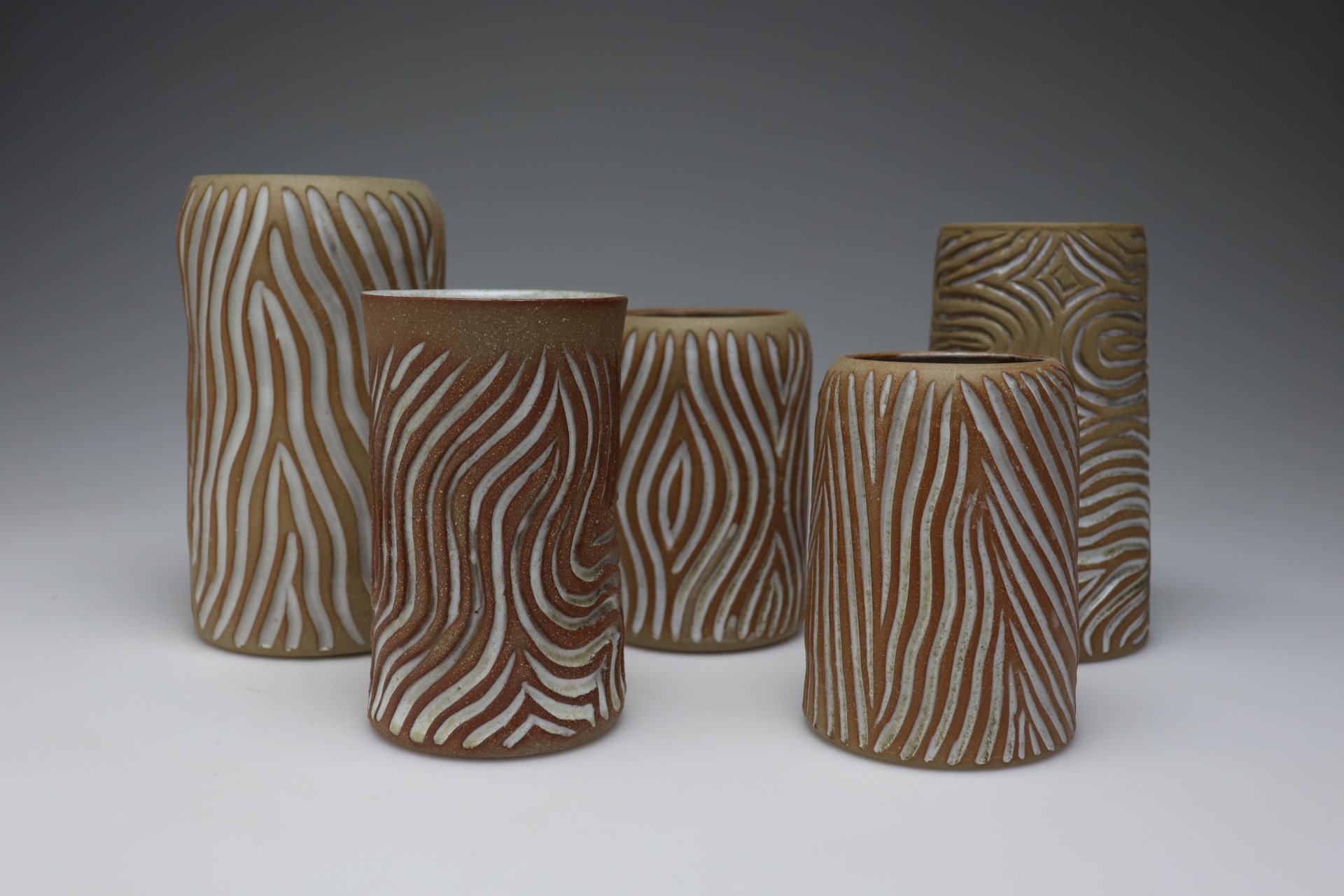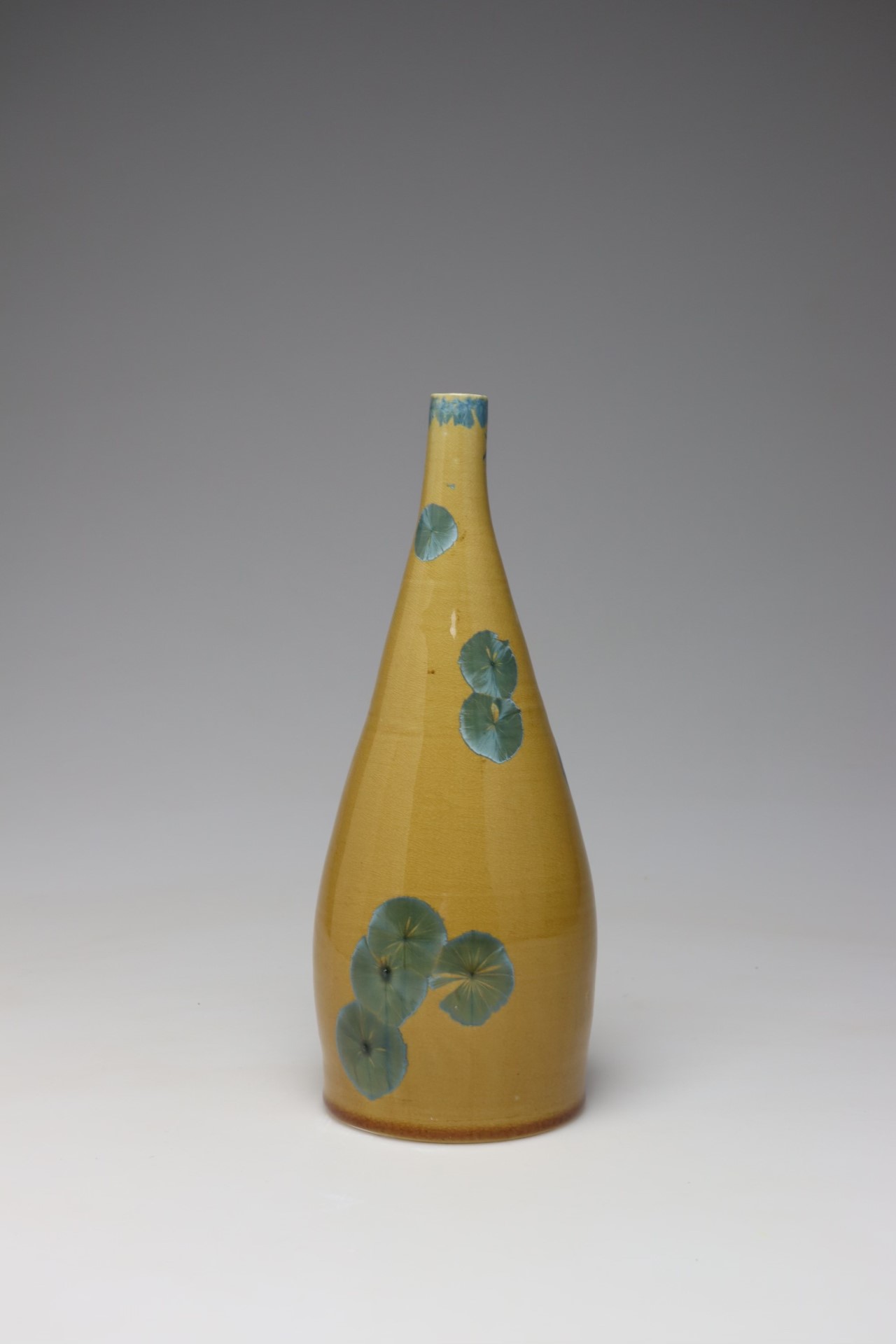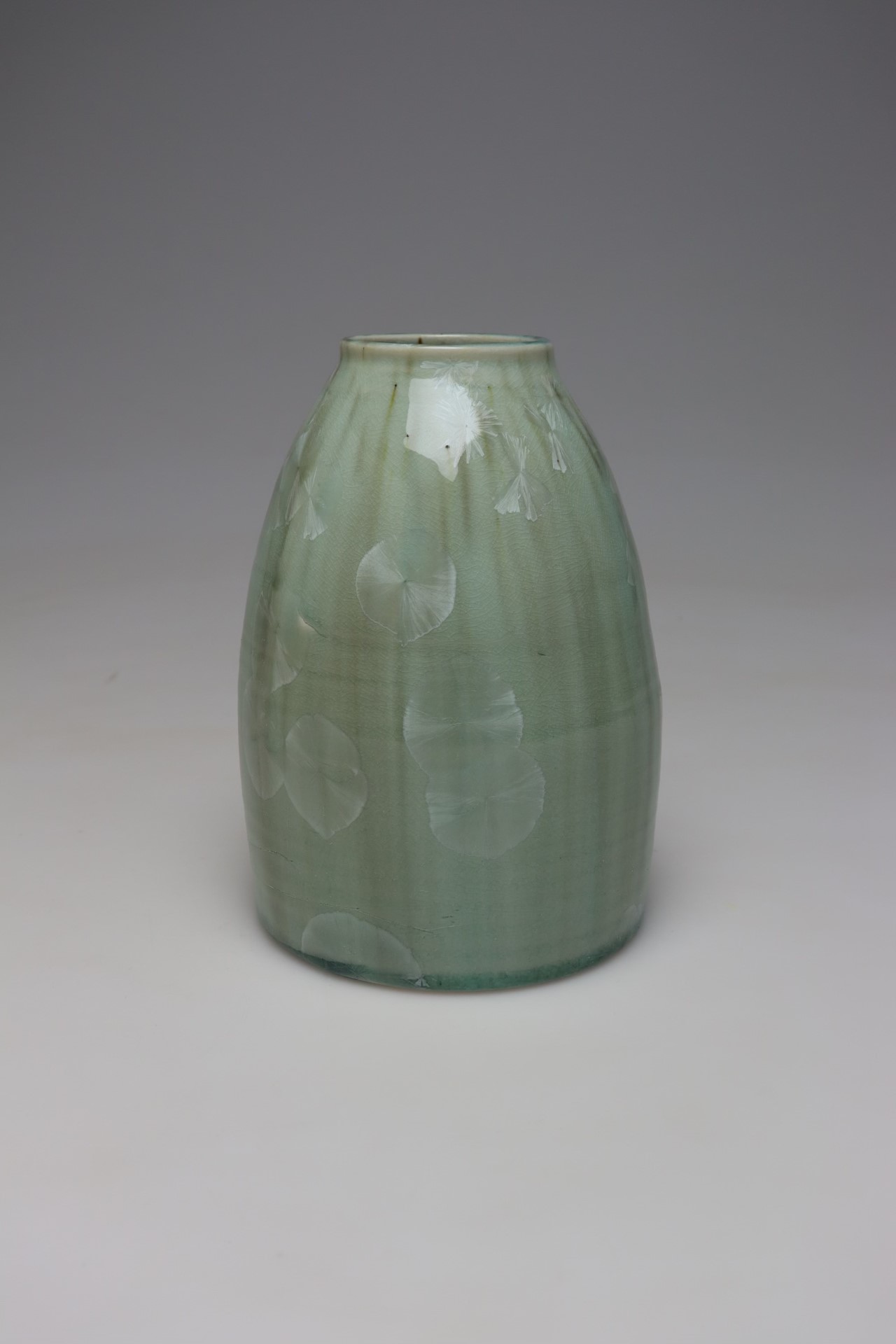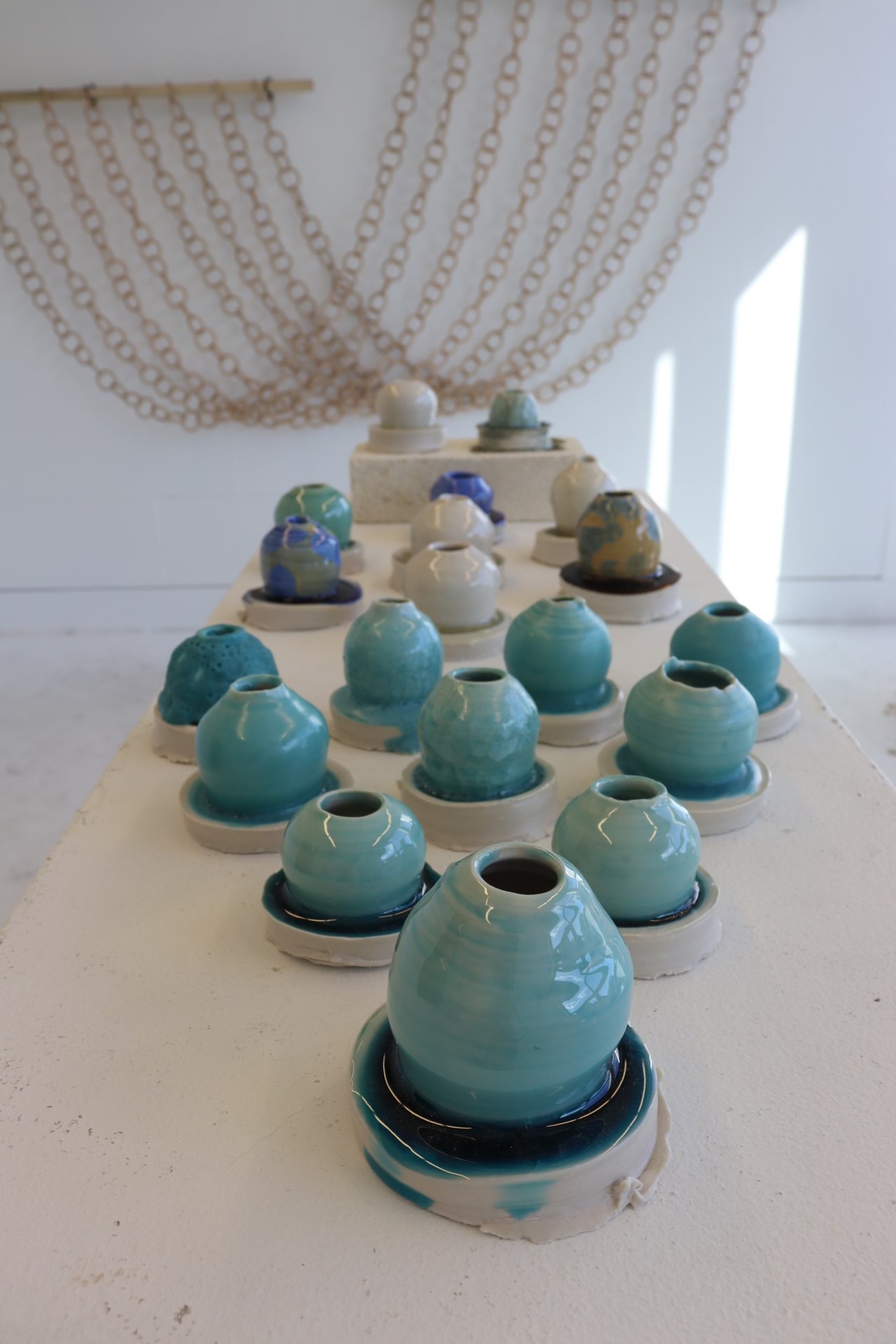For novice artists, the idea of submitting art to an exhibition may seem daunting. Luckily, experienced creators have ample wisdom to share.
Though many artists may wonder what it takes to go from a mere hobby to a full-time career, Ohio State art students Andrew Tieman and Hannah Slagell said no two artistic journeys are the same and offered up bits of wisdom they’ve gathered throughout their college careers to help empower beginner creatives.

A sneak peak of Andrew Tieman’s work, “For An Exchange Before We Part,” for his upcoming senior exhibition. Credit: Andrew Tieman
For Tieman, a fourth-year in studio art with a focus on ceramics, his artist experience included gap years, with a transfer from Columbus State Community College and a switch in majors.
“I thought I wanted to be an art teacher, came here and went through the entire art education program,” Tieman said. “Then at the last second, before the last semester, I switched to ceramics just because I was enjoying that so much.”
When it comes to the artistic process, Slagell, a third-year in studio art with a focus on ceramics and the Student League of Independent Ceramists’ primary leader, said she often bounces ideas off her professors and friends, in addition to conducting her own research.
“I think for other artists, just try something, research about it. Make an idea or see something or read it from a book,” Slagell said. “And then you’re like, ‘Hey, I’m gonna pick at it with my brain some more,’ and then it keeps growing and growing.”
Some artists have preexisting work they submit for exhibitions, while others create art for specific showings, Tieman, also the Student League of Independent Ceramists’ secondary leader, said. Prior to his first exhibition, titled “The Functional Show” and hosted at Hopkins Hall Gallery in April 2023, Tieman said he did not have a large body of work, which only made the experience more nerve-wracking.
“I was nervous, excited and — up until I finished — extremely stressed out,” Tieman said. “I felt the pressure to make something for the exhibition, which I think I almost prefer now.”
Although he acknowledged the path to success is different for all artists, Tieman said there are some fundamental concepts all artists should understand.
“Rejection is not failure,” Tieman said. “It’s the kick that keeps you confident enough to ask questions.”
Slagell, whose first exhibition was titled “Arts Scholars Juried Exhibition” and displayed at the Urban Arts Space in January 2023, said perhaps the most difficult challenge she’s encountered in making a name for herself as an artist has been overcoming her introverted disposition to openly express herself.
“I would say the hardest part is speaking your voice,” Slagell said. “It’s not handed to you on a silver platter. You have to learn how to speak for yourself because now you’re representing yourself by yourself.”
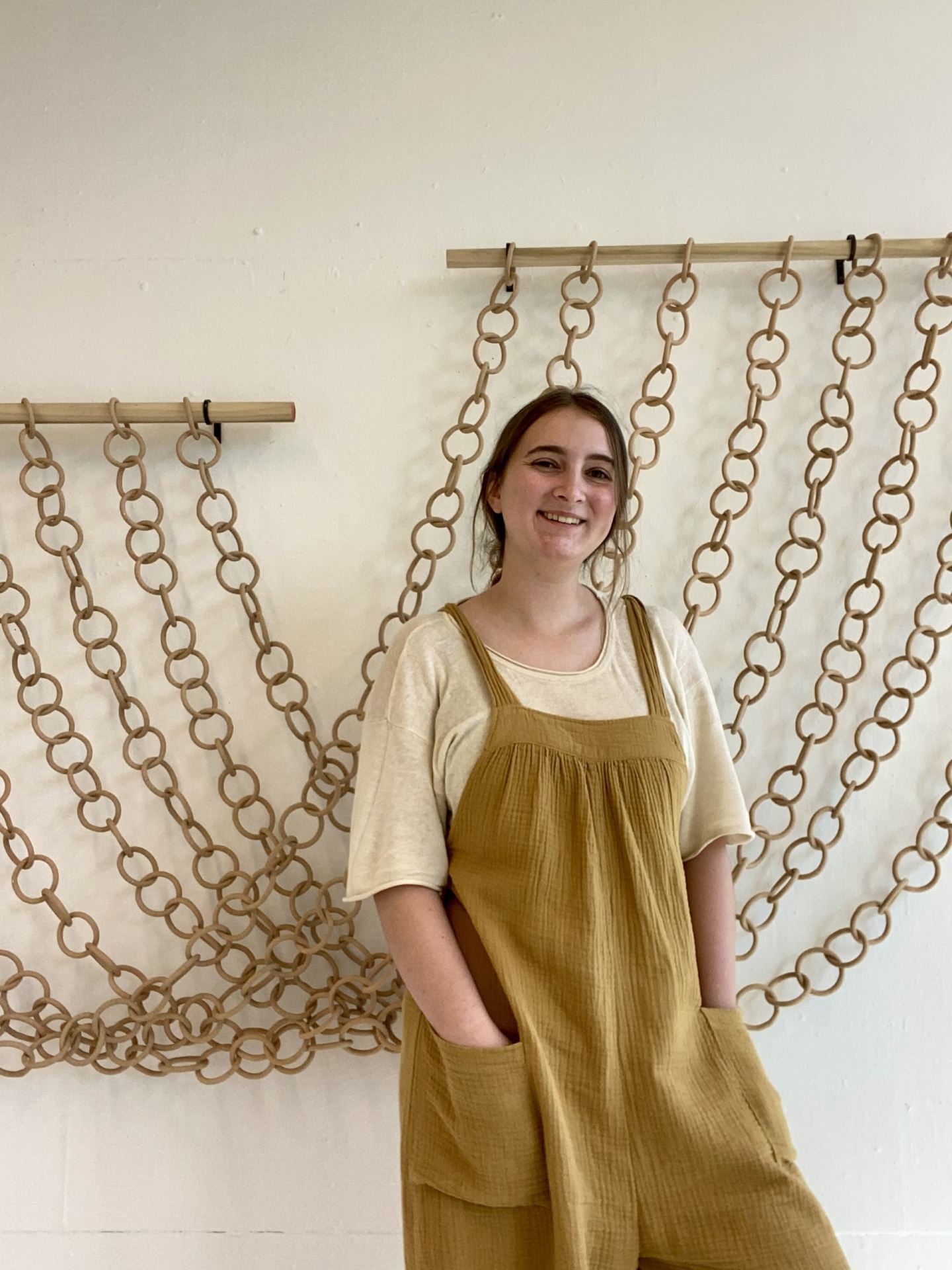
“Hannah Slagell with her work, “Chains.” Credit: Courtesy of Hannah Slagell
Tieman agreed confidence is a big struggle for many novice artists, especially as many doubt the validity of their work. It can take time for a budding artist to find confidence in their own art.
“You don’t make work for other people or the audience, you make work for yourself,” Tieman said. “The audience will come along when they can recognize it. It needs to be authentic to you.”
Tieman said varying perceptions will always exist when sharing art, and accepting that people interpret art their own way is crucial to an artist’s peace of mind.
“It’s hard showing work, it means showing a piece of yourself, and so there’s always a sense of vulnerability,” Tieman said. “What you make, it’s not for everyone, and that’s okay.”
Slagell said it’s important for artists to push themselves when opportunities like internships, exhibition openings and/or research grants arise. Although seeking advice from professors can be a big help, Slagell said the most important approach for artists is to not falter in the face of the unknown.
“Just experiment in happy accidents or accidents to learn,” Slagell said. “Don’t think, just do.”
